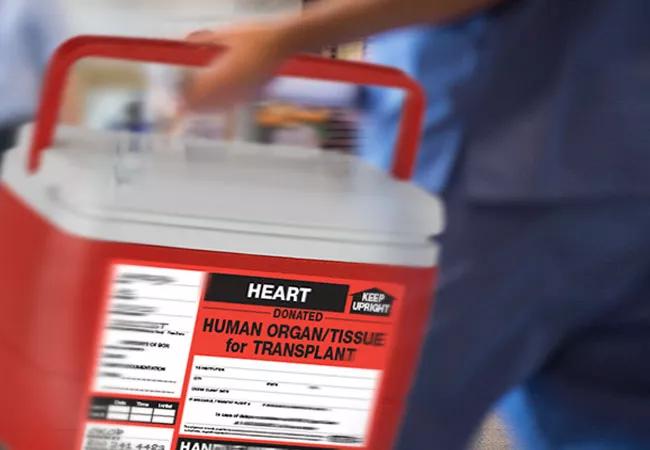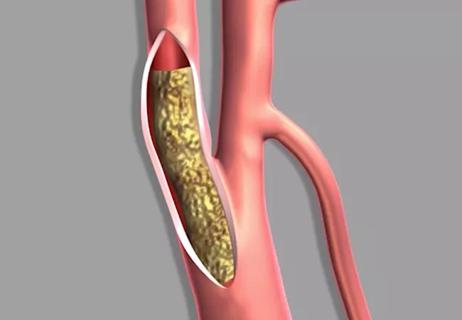SRTR analysis identifies most-important predictors of waitlist mortality

Most variables that are highly predictive of who is most likely to die on the heart transplantation waitlist are included in the current U.S. tiered allocation system for donor hearts, with two exceptions: estimated glomerular filtration rate (eGFR) and serum albumin level.
Advertisement
Cleveland Clinic is a non-profit academic medical center. Advertising on our site helps support our mission. We do not endorse non-Cleveland Clinic products or services. Policy
So concludes an analysis of the Scientific Registry of Transplant Recipients (SRTR) national database recently published in the American Journal of Transplantation by the Cleveland Clinic-led Transplantation of Hearts to Maximize Survival (THEMIS) Investigators group.
“To better reflect medical urgency, the Organ Procurement and Transplantation Network [OPTN] and United Network for Organ Sharing [UNOS] recently changed the U.S. adult heart allocation system from three to six tiers,” says the study’s lead author, Cleveland Clinic heart failure cardiologist Eileen Hsich, MD. “The new six-tier system offers greater granularity in prioritizing patients by risk of death on the waitlist, but there’s still a need for an allocation score that includes all important variables impacting waitlist mortality. We undertook this analysis to identify which factors captured in the SRTR database — but not necessarily critical to UNOS status — are most and least important to heart transplant waitlist mortality.”
The investigators studied all-cause mortality of all 33,069 adults on the active heart transplant waitlist in the SRTR database from January 2004 through August 2015. Over median waitlist follow-up of 4.3 months, 5,514 transplant candidates died.
Using the machine learning algorithmic statistical method known as Random Survival Forests, the researchers identified the following patient variables as the most important predictors of waitlist mortality:
Advertisement
Less important predictors of waitlist mortality were use of antiarrhythmic medications, history of stroke, vascular disease, prior malignancy, history of tobacco use, blood type and race.
The authors identify at least four important overarching findings or conclusions from the analysis.
The current allocation system includes most variables highly predictive of waitlist mortality. “Both the new six-tier allocation system and the prior three-tier system base the definition of medical urgency for heart transplant on devices, inotropes, mechanical ventilation, functional capacity and heart disease type,” notes Dr. Hsich, Associate Medical Director of Cleveland Clinic’s Heart Transplant Program. “All these variables were found to be highly predictive of waitlist mortality in our study, so this is a reassuring finding.”
eGFR and serum albumin were more predictive than current criteria for transplant listing. “Our most interesting finding was that eGFR and serum albumin level were more predictive of waitlist mortality than most devices, yet these tests are not among the criteria used in the latest allocation system,” observes study co-author Eugene Blackstone, MD, of Cleveland Clinic’s Department of Thoracic and Cardiovascular Surgery and Department of Quantitative Health Sciences.
He notes that renal function is a recognized predictor of mortality in the setting of heart failure but adds that its use may be limited by its status as a dynamic variable that’s impacted by diuretic use and hydration. “However, a recent study by our group [J Am Coll Cardiol. 2018;72:650-659] demonstrated that dynamic changes in renal function significantly alter estimates of mortality on the heart transplant waitlist,” Dr. Blackstone adds. “That finding, together with the predictive power of eGFR and serum albumin in the current analysis, argues for consideration of these measures in a future heart allocation score.”
Advertisement
It’s too soon to eliminate any variables from the OPTN/UNOS database. The study found a few variables to be only marginally predictive of waitlist mortality. Dr. Hsich notes that while it may be tempting to replace these variables in the OPTN/UNOS database with other, more pertinent variables, such a move would be premature. “Some variables have importance for reasons beyond waitlist survival prediction,” she explains, “such as ensuring a proper donor/recipient match or predicting post-transplant outcome.”
She adds that a variable’s importance also may derive from its ability to modify the effect of another variable. “Our study identified a number of complex interactions between variables,” she says, “such as an additive risk in mortality based on renal function and serum albumin level. We also observed sex differences in mortality risk above a certain eGFR threshold. Interactions like this can matter to mortality, so variables should not be viewed solely in isolation.”
Machine learning is valuable in this setting. “Machine learning technology like the Random Survival Forests [RSF] method employed in this study can be used to create a data-driven allocation system similar to what has been developed for staging of esophageal cancer,” says Dr. Blackstone. RSF is a nonparametric algorithmic method that identifies risk factors without prior information on any possible parametric relationships, he notes, and is well suited to handle complex interactions among variables and large amounts of missing data.
Advertisement
Dr. Hsich concurs. “This study was supported by a four-year NIH grant that our THEMIS Investigators group received to examine disparities in survival before and after heart transplant,” she says. “An important component of the grant [detailed in this earlier Consult QD post] involves development of machine learning methods to optimize patient outcomes. We expect to share more insights on the value of machine learning as our grant-funded work continues.”
Advertisement
Advertisement

Study authors urge reevaluation of the sweetener’s safety designation by food regulators

Surprise findings argue for caution about testosterone use in men at risk for fracture

Findings support emphasis on markers of frailty related to, but not dependent on, age
![GettyImages-1252287413 [Converted]](https://assets.clevelandclinic.org/transform/StoryPanel/350804b2-f1e4-4d97-a277-9629cf45af3e/23-HVI-4120348_redlining_650x450_jpg?w=3840&q=75)
Large database study reveals lingering health consequences of decades-old discrimination

Additional analyses of the two trials presented at 2023 ESC Congress

Prospective SPIRIT-HCM trial demonstrates broad gains over 12-month follow-up

An ACC committee issues recommendations to accelerate sluggish progress

Review of our recent experience shows it’s still a safe option